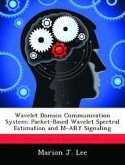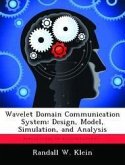The purpose of this research was to implement a Transform Domain Communication System (TDCS) in hardware and compare experimental bit error performance with results published in literature. The intent is to demonstrate the effectiveness or ineffectiveness of a TDCS in communicating binary data across a real channel. In this case, an acoustic channel that is laden with narrowband interference was considered. A TDCS user pair was constructed to validate the proposed design using Matlab to control a PC sound card. The proposed TDCS design used the Bartlett method of spectrum estimation, the spectral notching algorithm found in TDCS literature, quadrature phase shift keying, and minimum mean square error transverse equalization to mitigate the effects of noise and intersymbol interference. Water-filling was evaluated as an alternative to spectral notching for performing waveform design and is shown to perform equivalently. Validated software was migrated to code suitable for use onboard a Digital Signal Processor Starter Kit (DSK). Two DSK boards were used, one for transmission and reception, and bit error performance results were obtained. Bit error analysis reveals that the TDCS hardware performs approximately the same as literature suggests.








